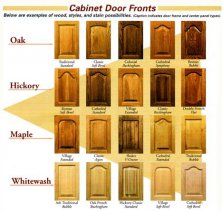Whether it's because they've deteriorated or you've simply outgrown them and want a fresh new style, replacing kitchen cabinet doors can make a dramatic difference in your kitchen, giving it a lift that makes everything seem new.
Once you've made the decision to replace your kitchen cabinet doors, you'll need to decide on what kind of doors you want. Your options include custom doors, semi-custom, stock or ready-to-assemble (RTA), and whether or not you want wood, veneer or laminate. Custom doors are designed by you and built to your specifications. Semi-custom are exactly what they imply and have some prefab elements and some custom elements. Stock are established designs you buy and install, and ready-to-assemble doors require some DIY skills.
Replacing the doors involves taking off the existing doors, face frames and hardware while keeping the cabinet boxes where they are, and putting on new doors and face frames with the same hardware or new hardware. New hardware can also make a dramatic difference, so that's something to consider for an updated look.
You'll want to make sure the doors match the cabinet boxes. This can be accomplished with paint, staining or refacing the boxes for a more streamlined, consistent look. Once you've decided on how you will update your kitchen cabinet doors, you will need to decide on the style. Some options for the style can be flat panel, which are doors with a flat center panel and a raised frame. Another style that's popular is raised panel cabinet doors, which have a raised center panel surrounded by a contour. A slab cabinet door is usually preferred in contemporary designs and is a smooth, flat slab with no contours, panels or accents. Accent doors are generally just for decoration and not functionality and are not used as the design style for all the cabinets in the kitchen. Accent doors can be louvered, glass, mullion, chalkboard and sheet metal; they serve well for reinforcing an existing design style and adding a little flair to your kitchen.














